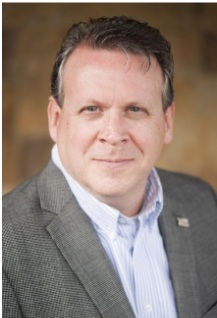When considering sustainability, many organizations think of environmental concerns and the capacity to endure in this aspect. But what about the sustainability of a safety program? How does the program endure, evolve, and continually improve?
Professionals in the safety field are usually both adept and eager to create a policy or procedure for every task carried out at work. Though each process is built to improve overall safety, the conflict inherent to implementing a series of disjointed programs may inhibit the achievement of that end. Programs on paper are only one component of the puzzle. As Dan Peterson suggests, “Paper doesn’t save people, people save people.” The safety program, the process, and the environment in which it is used must all be effective. Using the seven steps to a sustainable safety system, individuals, processes, and cultures can be kept on track and thrive.

1. VSP: The first step is the adoption of a vision, strategy, and plan (VSP). The vision statement clarifies a positive direction of change and indicates with succinct language where the program is headed. This first element defines the intentions of the entire program–what needs to be accomplished. When communicated, the desired effect is to motivate a team to action. Next, a strategy is created using logical, forward-thinking steps that can achieve this vision. Lastly comes the plan. This entails individual, specific components of the strategy that are designed to meet the specific needs of the organization.
2. Active Engagement: Involvement of employees (from the top management to the front-line worker) is necessary to instill ownership of safety across the entire organization. Safety is every individual’s responsibility. This mindset should be displayed in appropriate, safety-related activities. For management, this could include engaging employees in conversations about safety and showing support for safety initiatives. For workers, this might translate to reporting workplace hazards and coaching peers to recognize and deter at-risk behaviors.
3. Effective Goal Setting: As the VSP is clarified, gaps between where a program is and where it should be will become evident. Setting achievable goals for a safety program is imperative. The goals set should be both quantitative and qualitative and need regular review. Assessments using these goals will enable measurement of the effectiveness and give guidance to the proper direction of the overall safety process.
4. Communication: Effective communication is more than a notification or the distribution of a new policy or procedure; it is more than a bloated health and safety binder. Effective communication is a demonstration of trust and fosters a relationship of mutual respect and caring. Open conversation is an opportunity for two-way dialogue between employees and managers. During this exchange, employees can receive valuable insight and voice concerns. This makes a way for management to listen and generate action that addresses those concerns and promotes trust. How a message is delivered and received is often more impactful than what the message is stating.
5. Training: Companies are often in a state of transition (especially in the aftermath of the Great Resignation). Workforces change, processes get modified, and priorities shift with the trends, both locally and globally. Training must be dynamic and evolve to meet the needs of a complex environment. Additionally, training should develop key sustainability skills such as communication, teamwork, risk management, and safety efforts in general.
6. Risk Logic: Very often, a risk is identified, and policies or procedures are employed to remedy the problem. However, risk can come from many sources. Poor communication, inadequate (or no) training, a failure to address concerns that were previously identified can all lead to increased hazards. Beyond risk identification, an investigation must take place to pinpoint both the original and any outlying factors and treat more than just the symptoms. In addition, an organization must evaluate and define what risk is acceptable and what is not.
Another point of consideration is that the approaches taken by safety professionals and operations teams to identify potential exposures greatly vary. Many times, a health and safety plan is created to eliminate future incidents, but there is a struggle to implement programmatic components due to complexity, culture, mismatched priorities, and revenue concerns. If only good intentions were enough! Risk will be present as long as humans are. Risk assessments should be conducted so that risks can be identified, analyzed, prioritized, and mitigated.
7. Continuous Improvement Process: A methodology for routinely identifying where a program is at and where there are shortcomings is the Deming Cycle. The Deming Cycle utilizes the Plan-Do-Check-Act categorization to pinpoint the gaps between what is expected and what is happening, allowing for incremental changes to be made that successfully drive improvement.
Regarding sustainability, the cycle can be detailed as follows:
- Plan: Determine the vision and formulate clear strategies to create and achieve goals.
- Do: Execute the plan and collect information to discern the efficacy of the program’s elements.
- Check: Evaluate the information to spot areas for improvement.
- Act: Positively recognize any achievements and then offer necessary corrective feedback. Make changes to the process, people, and environment as necessary.
These steps will repeat periodically as new goals and objectives are created based on accomplishments and discoveries.
Filling a binder with elaborate policies and procedures is not the way to build a safety program–how those components are implemented is the key to sustainability. The program must have a purpose that, in turn, must be known and understood. Expectations should equal actuality. If this is not the case, then there is a need for positive change. Any barriers that interfere with the establishment of an effective overall safety program must be broken down.
Achieving safe results consistently requires effort and planning, just like any other aspect of a company or its operations. All of this must occur in an environment in which every employee has a voice and participates in achieving the desired effect. This is how a business can ensure that everyone ends the day as healthy as when they started.
AUTHOR BIO

Cary comes to the SafetyStratus team as the Vice President of Operations with almost 30 years of experience in several different industries. He began his career in the United States Navy’s nuclear power program. From there he transitioned into the public sector as an Environmental, Health & Safety Manager in the utility industry. After almost thirteen years, he transitioned into the construction sector as a Safety Director at a large, international construction company. Most recently he held the position of Manager of Professional Services at a safety software company, overseeing the customer success, implementation, and process consulting aspects of the services team.
At SafetyStratus, he is focused on helping achieve the company’s vision of “Saving lives and the environment by successfully integrating knowledgeable people, sustainable processes, and unparalleled technology”.



